Big Tech Company Design Challenge
An example of a helpful tool for learning and remembering names and faces.
-
On Behalf Of
- Big Tech Company
-
Service Provided
Problem Solving Prototyping -
Year Active
January 1st, 2018 — January 1st, 2018 -
Deliverables
- Sketches
- Job Stories
- Testing Plan
- Process Documentation
- Wireframes
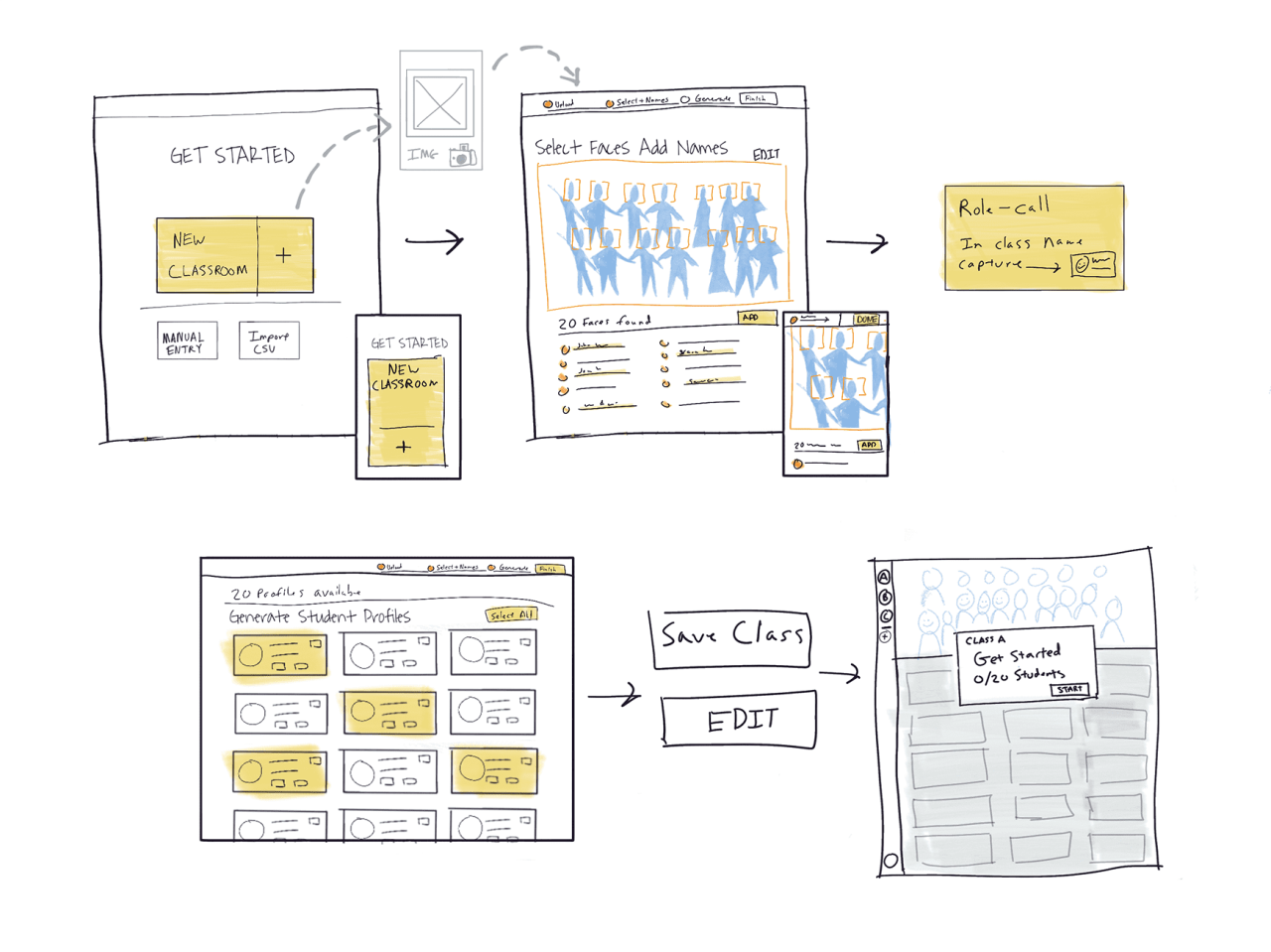
TLDR: To show my process and craft, this design sketch aimed to create a better way for teachers and professors to better remember their pupil's names and faces. Using a memory technique of mental filing, combining name, image, and mnemonic device. Leveraging facial recognition design patterns and A.I. augmented data entry for faster learning.
Context and Challenge
What is Hello Class? A better way of getting acquainted with your class. The app is a helpful tool for learning and remembering your class's names and faces. Teachers use this product to do the job of recognizing students' names at the start of a new school year or the beginning of a new semester, right when students are introduced to the teacher.
Other tools for this job can also be found in the classroom. Icebreaker games, written name exercises, random list tools used for calling on students, name word association games, and name repetition exercises, both digital and paper-based, are commonly used to remember pupil names and faces, all of which offer some aspect of memory aides but never a complete method. This app will always get picked for the job because of how it leverages the mind's memory, smart automation, and the users own inputs, to help the user file names and faces quickly for further practice, inside and outside the classroom.
What do users need it to be?
A helpful tool for learning and remembering your class names and faces.

Looking at the small product brief, I attempted to extract a few essential parts to help guide the design process. As I began exploring the context of the problem, a few things popped out at me. Teachers are explicitly mentioned as the target audience, and the setting of the classroom is called out as well. These details could entail many situations from a single room school in Ghana or the U.S. Government school system.
The challenge itself may not be a problem confined to teachers alone, so what makes it essential for teachers to remember names? Is accuracy the goal, or is it something deeper? Is the problem because of the number of students, or is it more about how the mind remembers names? Is the problem being overwhelmed, or is related to the pupil/teacher relationship? What does unaided accuracy mean?
I started researching a bit of memory and how teachers remember students' names now. Doing rough research to lead point to validation; later on, I kept the analysis of those I knew and a few online videos and hinting at further research avenues later on.
I found a series of videos documenting a few methods for mental filing. A way of remembering things using the way the brain works, focusing on the name, filing away details of the personal appearance, associating an object/image with that person, using those elements in action sentence, and followed by reviewing all the previous.
Asking deeper questions helped drive some of the generative research to get to a better answer. First, focusing on the job to be done, the situation, motivation, and expected outcome people expect when attempting to solve their actual problems. Focusing on the job would help remove any distractions like getting stuck on who might the different audiences be and instead focusing on the workflow that people would use the tool for. A Job may be done by many different users, not just teachers. I used the framework: When____, I want to, so I can____.
A high-level job emerged:
When getting introduced to a class,
I want to quickly capture all my student's names, pronunciation, and faces,
So I can immediately remember my student's names and focus on building better teaching relationships with my pupils.
The second step was to break down some of the language used in describing the problem and how the problem is currently being solved. Looking at the language used in context, in research, and the brief. Things like:
classroom / faster / names / faces
classroom / memory / repetition / learning
teacher / pronunciation / names / memory
student / less-invasive / respected
Third, making sure this app provides the desired outcome, I phrased the goals to reflect outcomes implied in the exploratory research and brief.
Minimize the likelihood of forgetting a student's name.
Reduce time to completely capture various ages without continued student involvement in the memory process.
Decrease error rate in name remembering faster.
Increase the user's chance of correctly remembering student faces and names.
Based on the research and the exploration of the brief, some essential requirements could be created.
At this point I put some requirements down on paper.
it should provide a way to store student profiles comprising name, face, memory aides, and pronunciations.
it should sort by classrooms
it should allow for quick student profile creation and on-boarding
it should allow for non digital methods of remembering names.
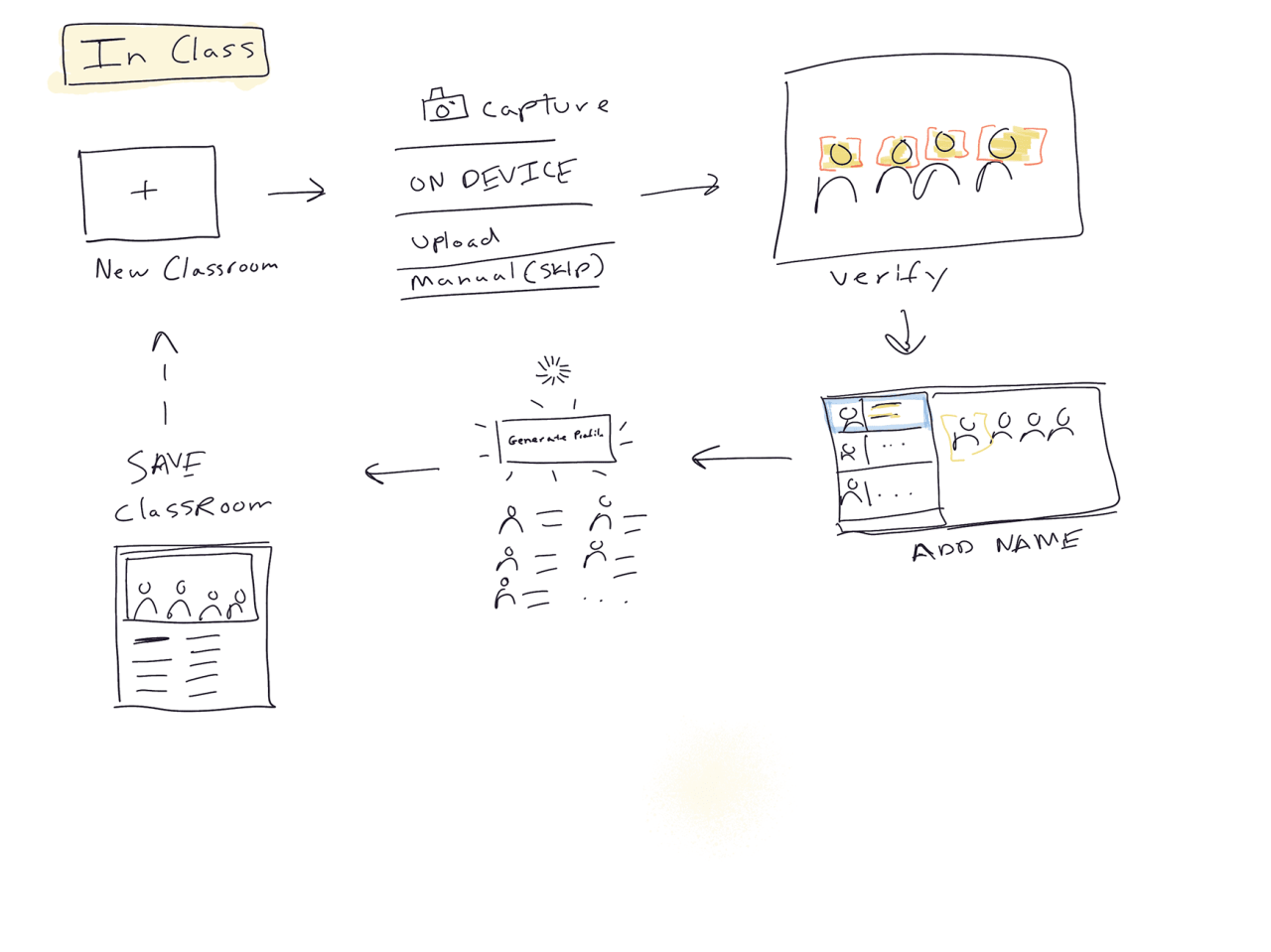
My hypothesis was that to the teacher; it is more important to show to students that they are acknowledged and respected, rather than focusing on name accuracy for administrative purposes. Names mean a lot, and teachers remember names not just for classroom control, but to lead to better relationships with their pupils. Wouldn't it be nice if a tool could not only help record faces and names of students but also add pronunciation as well? To help teachers build better relationships with their students, the app should leverage how memory works, facial recognition, machine learning for smarter student profile creation, and audio recording to get students' names right.
First designing the memory filing method, the process entails a focus on linear progression in remembering the names and attributes of a student, focusing on the name and then looking at any physical traits the student has, like hair type or facial characteristics. Then thinking about a mental image representing that name. An example could be: John likes to jump. Helping the user to think about jumping and picturing that.
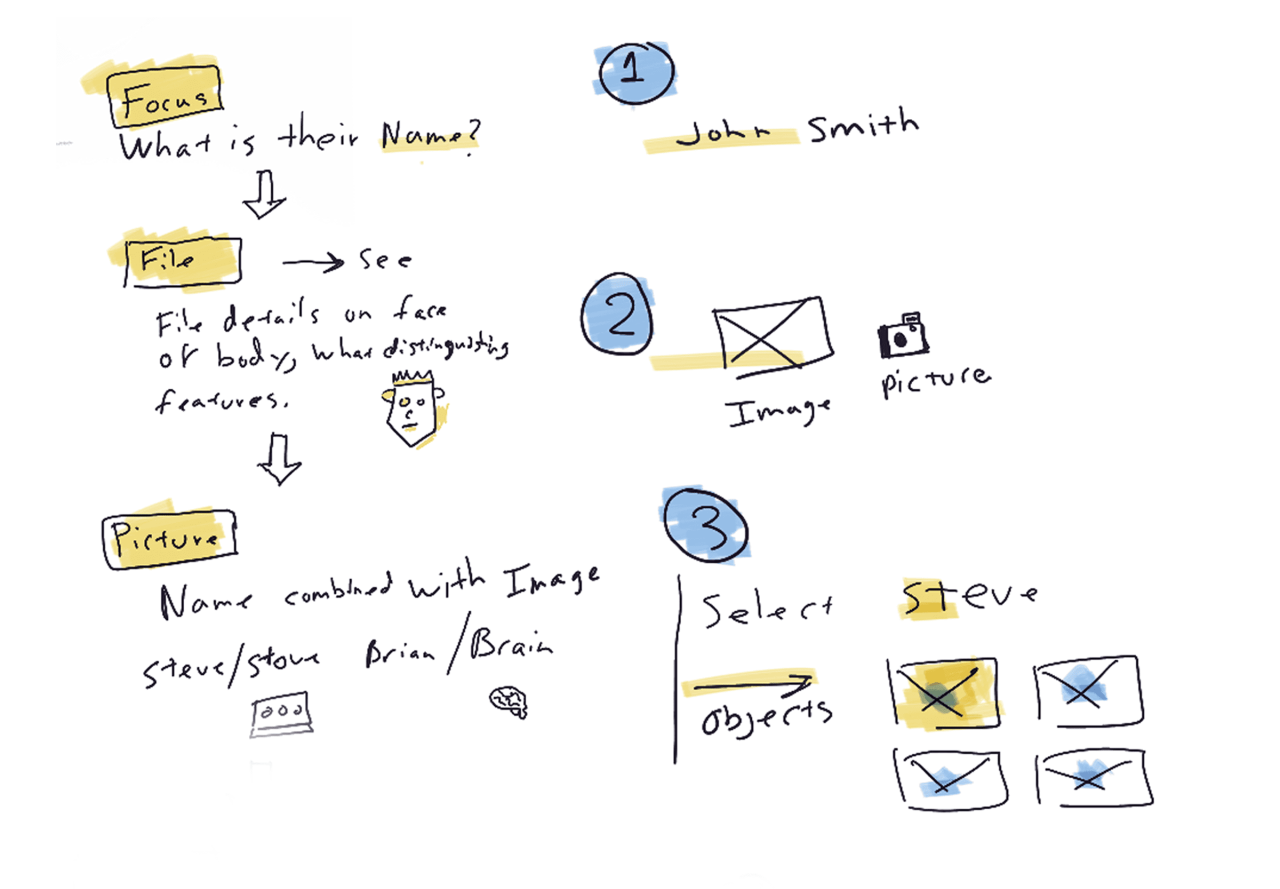
Followed by actions, the grouping of all the previous attributes into a sentence to help remember the face and name. All followed up per pupil for review. This creates a profile that can be quickly created, reviewed, and remembered.
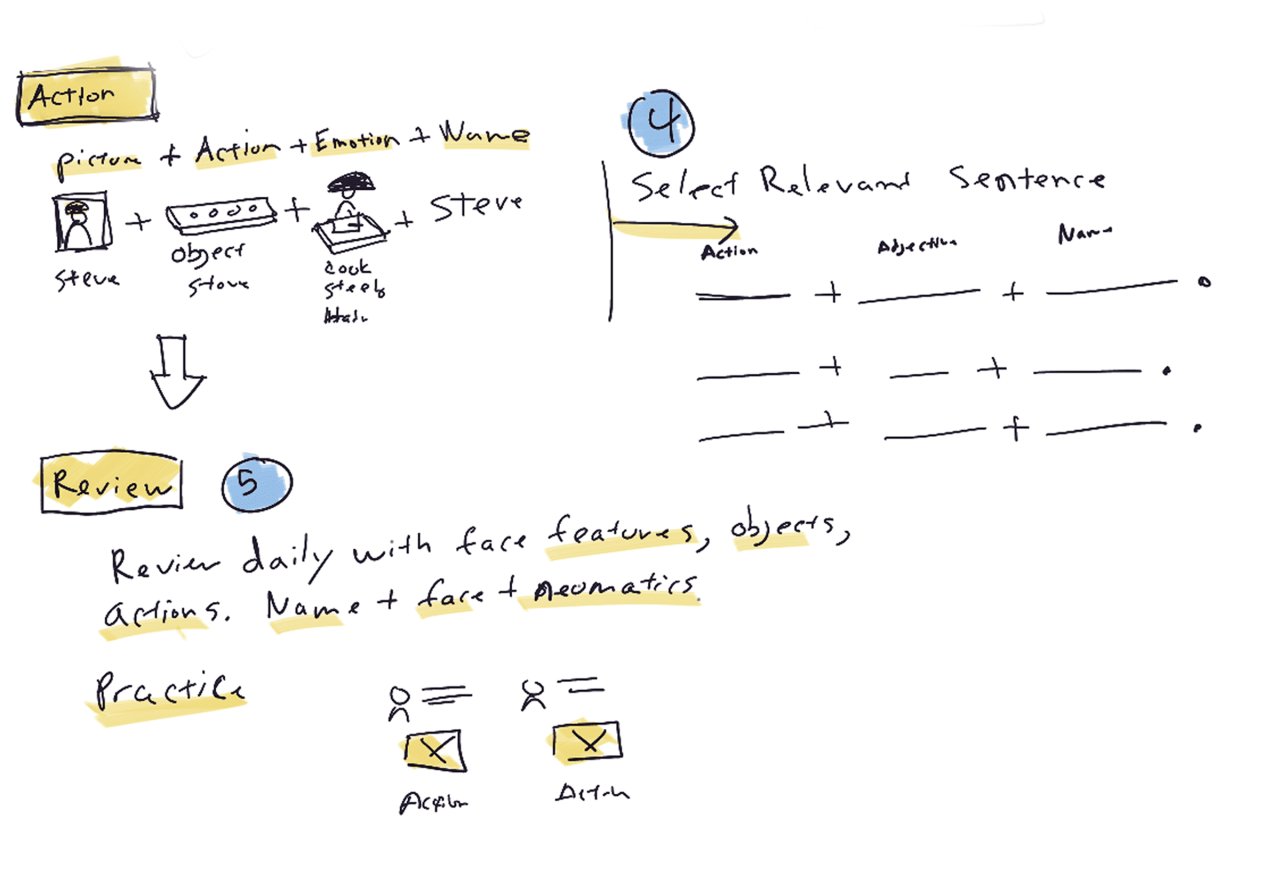
Since the memory method requires a profile to start, I then began designing the steps to onboard a class into a bunch of profiles. A user flows to get a photo of students into a format that allows the user to enter the memory aspects of a profile. The key piece implied here is that the teacher must be assisted in creating the profile. Giving the user the ability to extract faces from an image, verify name, add the memory devices, all while being supported with helpful suggestions on what might be a useful memory aid, would ensure that the process would be quick to start and effective.
Create Class
Teachers start a class fresh by creating a grouping of student profiles.
Photo
Using a device camera, uploaded images, or manual entry. Teachers add students' faces to the app.
Generate Profiles
The app smartly extracts faces for fast name entry. Teachers can add names instantly or on their own time. Pronunciations too.
Student Profiles Filed
The app smartly guides the teacher to remember the names of students better following a filing method of memorization.
Classes saved for further review.
With the class created, a guided review is used to make sure the student profiles are memorized. They are putting a face to a name.
Extra: Add audio of students name
Add audio so teachers can pronounce the student's names.

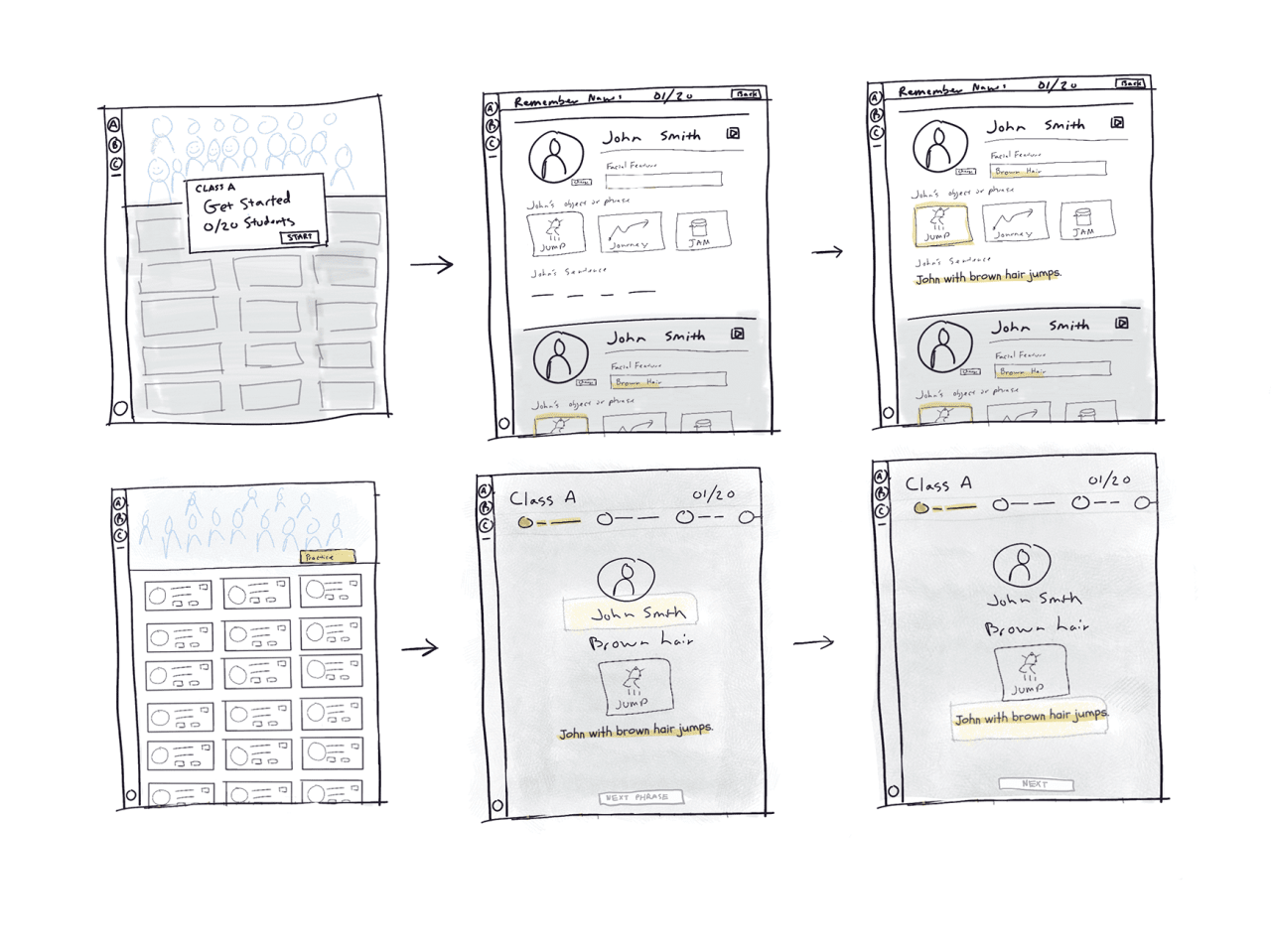
Building on each step, the guided process should be fast but still employ the correct method of memorization for a more accurate retainment of the student's names.
A responsive app, perhaps web-based or hybrid, might fit the diverse context teachers globally might face.
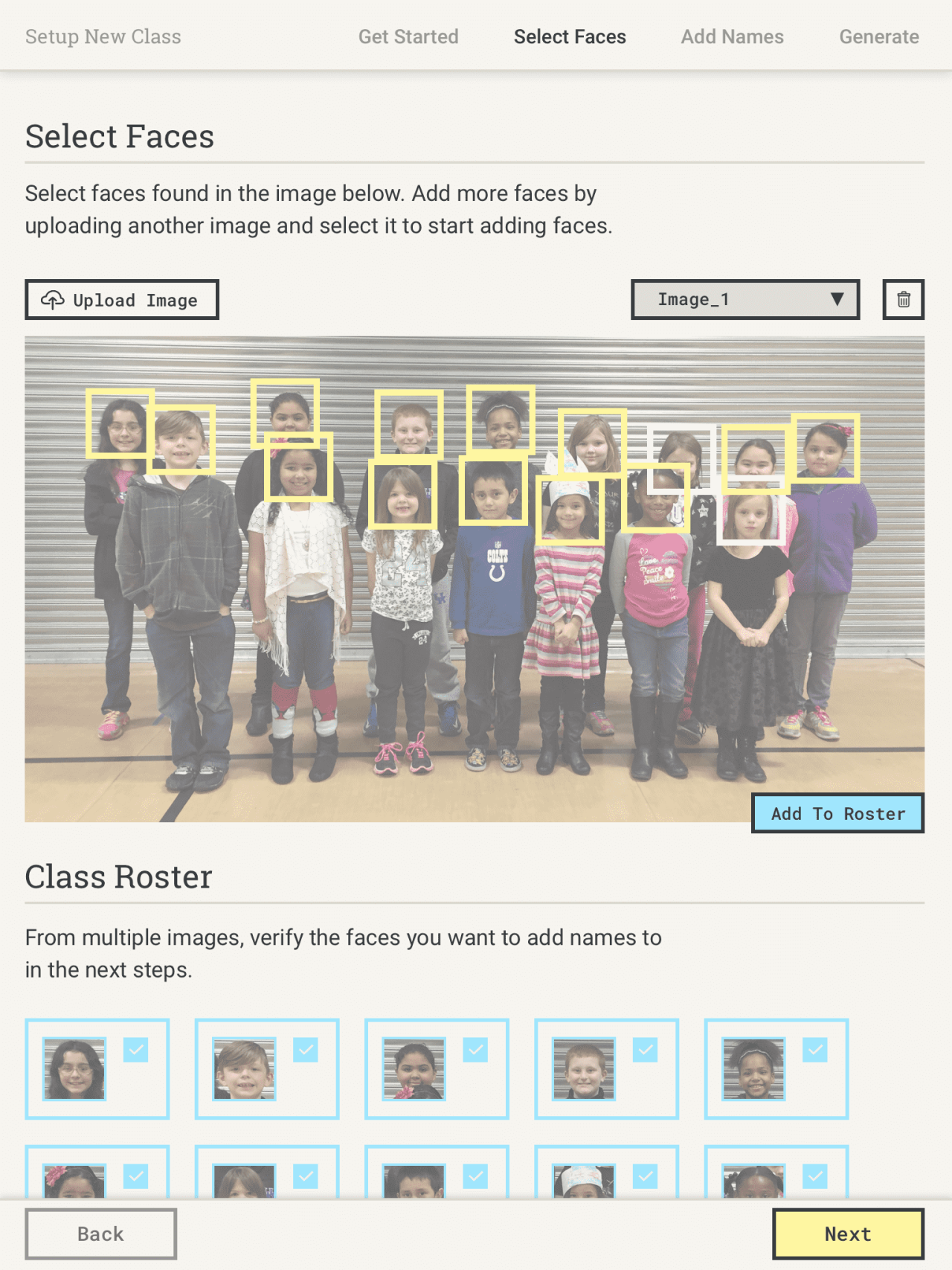
Initial links and Research
What is Hello Class?
A better way of getting acquainted with your class.
What do users need it to be?
A helpful tool for learning and remembering your classes names and faces.
Breakdown
classroom / faster / names / faces
classroom /memory / repetition / learning
teacher / pronunciation / names / memory
student / less-invasive / respected
{{ Art C | image }}
Detailed Goals:
it should provide a way to store student profiles comprising name, face, memory aides, and pronunciations.
it should sort by classrooms.
it should allow for quick student profile creation and on-boarding
it should allow for non-digital methods of remembering names.
Helpful Nouns:
Student
Name (First and Last)
Face photo
Memory aides
Face detail
Word association
phrase, action sentence
quick fact
Classroom
Teacher/user
Helpful Actions:
Capture Student profiles
structure profiles
aide in memory mental filling
record for repetition
share or export memory face and names
Helpful Groupings:
Classroom (browse, create, edit, export)
Student Profile (browse, create, edit, automate, export)
Solution
Using Job stories to understand the user's situation, motivation and outcome.
When______, I want to_____, so I can______.
(Situation) (Motivation) (Expected Outcome)High Level Job
When getting introduced to a class,
I want to quickly capture all my students names, pronunciation, and faces,
So I can immediately remember my students names and focus on building better teaching relationships with my pupils.
Designing for these outcomes:
Desired Outcome Statements:
Minimize the likelihood of forgetting a students name.
Reduce time to completely capture various ages without continued student involvement in the memory process.
Decrease error rate in name remembering faster.
Increase users chance of correctly remembering student faces and names.
When do you hire this tool?
People hire this product to do the job of remembering students' names every new school year or semester when new students are introduced to the teacher. The other tools for this job are in the classroom. Icebreaker games, written name exercises, random list tools for calling on students, name word association games and name repetition exercises both digital and paper-based, but this product will always get picked for the job because of how it leverages, how memory works, some smart automation and the users own inputs, to help the user file names and phases quickly for further practice, inside and outside the classroom.

The design focuses on a legible interface that aims for obvious utility with clarity in what an element is.
